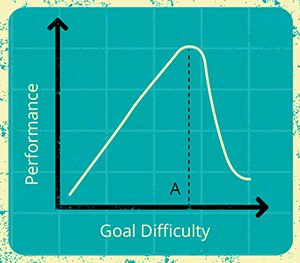
People with goals achieve more and are more successful — a lot more successful — than peers without them, whether they’re scientists, students, or corporate execs. Organizations whose employees are actively engaged in goal achievement have 3x greater operating margins in any given year than companies with lower engagement levels.
If you’re not in the habit of setting and measuring goals and objectives for your team, then doing so can seem like added complexity. In fact, just the opposite is true. Goals simplify and clarify what your team should do and provide a common definition of success.
Instead of trying to read your mind, members of your organization know what to focus on and how they’re measured; their decision quality improves and managers spend less time reacting and recovering from ill-informed choices.
The “process” of managing starts with goal setting; when goals are missing or forgotten, disproportionate time is spent on execution triage and the whole team does more work yet experiences less satisfaction.

Want to achieve your goals? Use these 8 tactics.
Goal setting is both art and science; goal achievement results from inspiring and aligning the efforts of others and diligent management. These 8 tactics can improve how you set and how often you achieve your goals:
 Difficulty scale 8 (out of 10): Set goals that require stretch and growth, but are within the realm of possibilities. Science suggests that people make less effort to achieve easy goals, which can undermine achievement. Worse, objectives that are perceived as impossible inspire even less effort and demoralize people.
Difficulty scale 8 (out of 10): Set goals that require stretch and growth, but are within the realm of possibilities. Science suggests that people make less effort to achieve easy goals, which can undermine achievement. Worse, objectives that are perceived as impossible inspire even less effort and demoralize people.
Inspire to aspire: Use language that inspires people to want to achieve the goals. “Triple revenues” doesn’t inspire nor speak to the heart (except for maybe the CEO and shareholders!). Use aspirational “change the world” language, the equivalent of morning coffee for your organization – energize the team and provide the jolt of progress.
Less is more: More goals don’t result in more achievement. Limit the number of goals to concentrate action on what really matters, and you’ll achieve your goals more often. Objectives should focus efforts and enable people to optimize time and decisions.
 Quantify success: Define the timeline for achievement (a 6-8 week period can be most effective for dynamic organizations) and quantify what success looks like. To help your team map the “change the world” goal to their work and get the right work done, quantify several success metrics for each goal. These key results might include bug clearance rates, response or consumption targets, revenue or growth targets, quality or customer satisfaction targets.
Quantify success: Define the timeline for achievement (a 6-8 week period can be most effective for dynamic organizations) and quantify what success looks like. To help your team map the “change the world” goal to their work and get the right work done, quantify several success metrics for each goal. These key results might include bug clearance rates, response or consumption targets, revenue or growth targets, quality or customer satisfaction targets.
Plan to achieve the plan: The odds of goal achievement increase to 90% when the goals. Break the goals down into action and consistently hold people accountable for delivering on those actions – something half of your peers fail to do.
3 second rule: Your team should be able to find the goals and see progress against them in 3 seconds. That’s about how long it takes to focus on the last message in their inbox – which is your goal’s competition for their time and focus.
 Don’t drive blind: Implement a real-time dashboard that shows your goals, metrics, key actions and their status, and make it visible to yourself, your team and your upline manager. You’ll be able to triage priorities to reduce risk and improve achievement velocity. (If you’re the manager, this is essential to your job and success.)
Don’t drive blind: Implement a real-time dashboard that shows your goals, metrics, key actions and their status, and make it visible to yourself, your team and your upline manager. You’ll be able to triage priorities to reduce risk and improve achievement velocity. (If you’re the manager, this is essential to your job and success.)
Celebrate progress: To achieve truly hard goals, science shows it’s often better to focus on how much progress has been made rather than the distance yet to go. Seeing what’s possible and what’s been achieved renews and reinvigorates teams for continuing challenge.
Check out the fun goals infographic below.

If you wish to know more, start your 14 DAY TRIAL with me! Just click the link below.
LINK: START YOUR 14 DAY TRIAL NOW
LINK: START YOUR 14 DAY TRIAL NOW
LINK: START YOUR 14 DAY TRIAL NOW
Source: workboard.com



